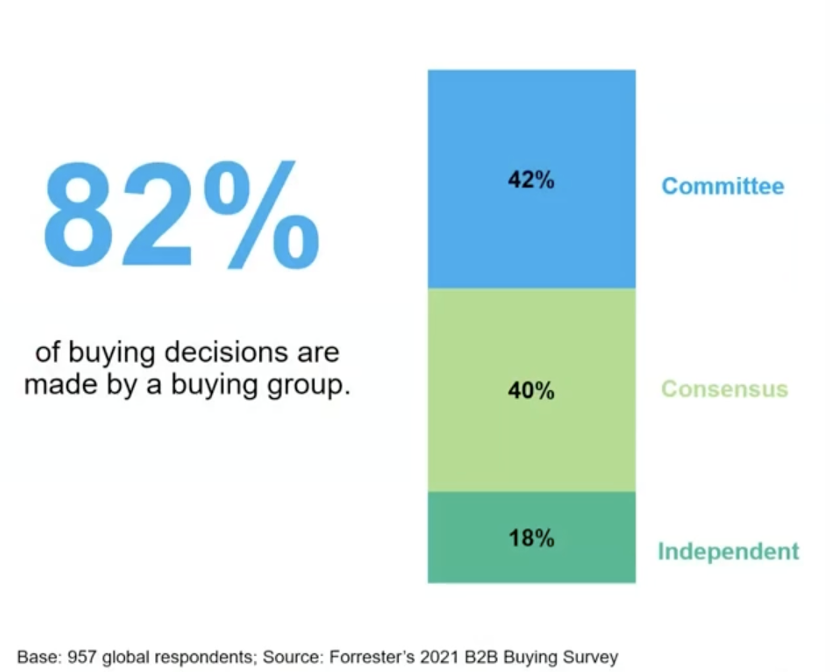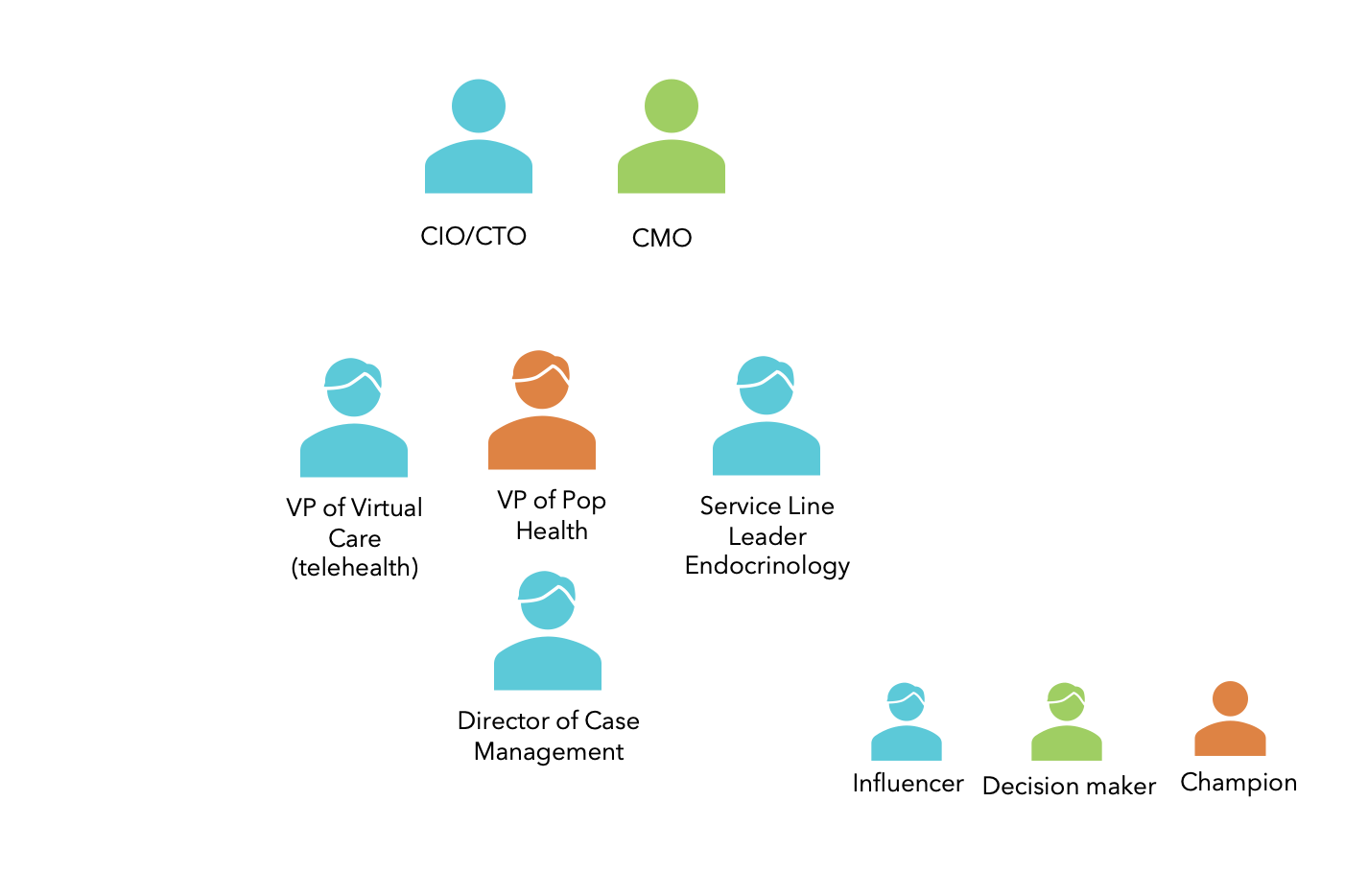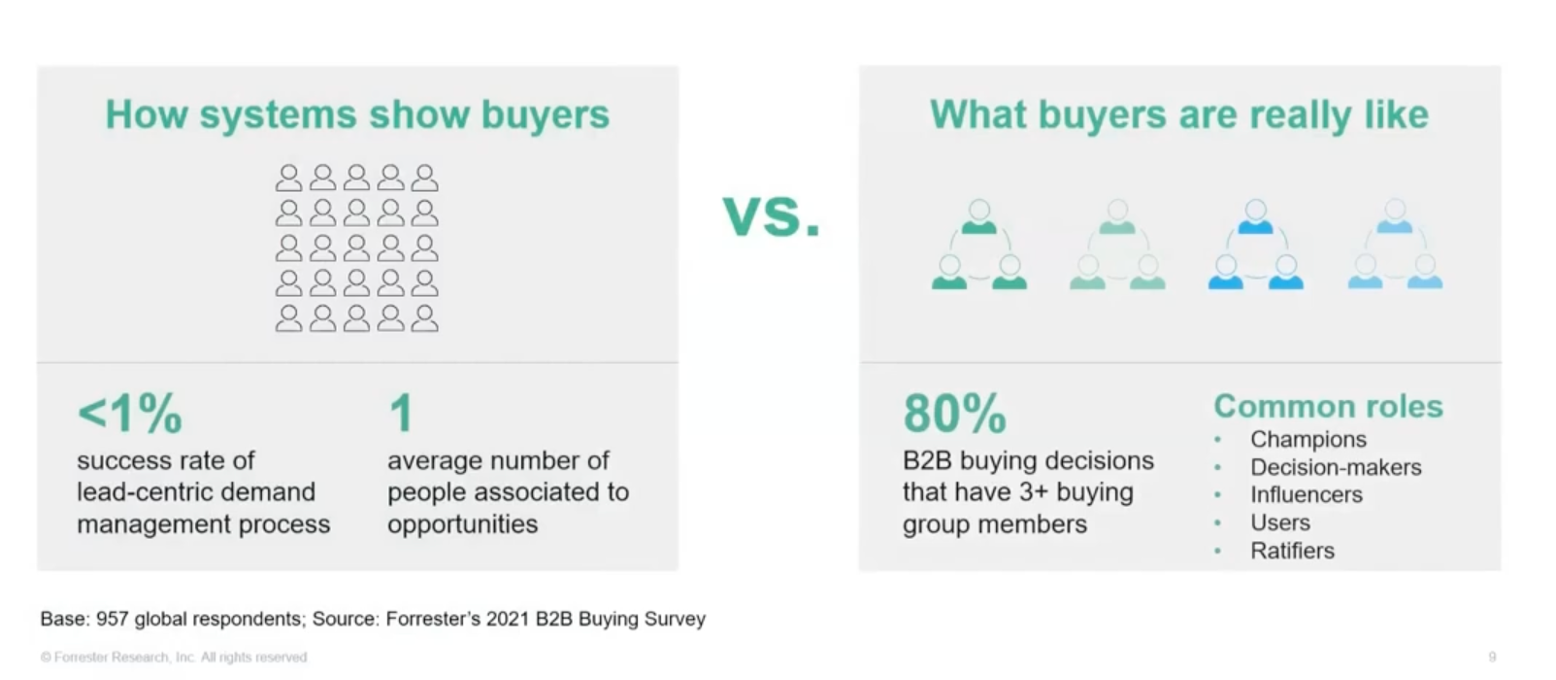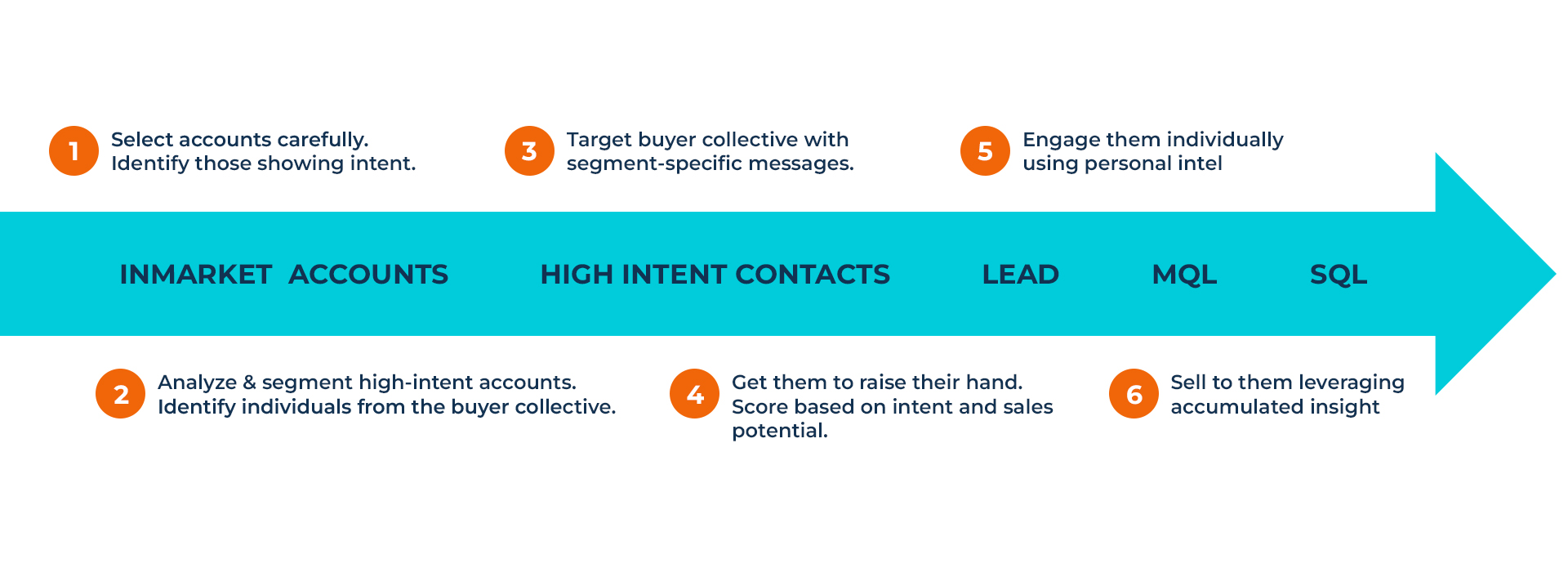
Why an Obsession with Buying Groups Will Improve Your Marketing
If Accounts are the atomic unit of ABM, then buying groups are the protons and electrons. In B2B and especially in ABM, Buying Groups, Buyer Groups, Buyer Collectives, Buyer Circles – whatever you choose to call them – are a fundamental concept. And it’s one we obsess over.
In this post, we will dive into buying groups: What they are and why a better understanding will change how you market.
What Is a Buying Group and Why They Matter?
According to Forrester, 82% of decisions are made by a buying group.
There are many individuals involved in complex B2B sales cycles. These people comprise the buying group, buyer circle, or buyer collective. In simple terms, there are three types of stakeholders:
- Champions – They may often initiate the buying process. They also own the problem that the buyer collective is trying to solve and take the lead in the process. Champions are the most important stakeholders. They are the lynchpin in a B2B sales process.
- Decision-makers – The second-most important stakeholder is the decision-maker. This person usually controls the budget but may also be the champion’s boss or at least a senior executive responsible for the outcomes of the decision.
- Influencers – There are many influencers, and they are typically involved throughout the process. They provide opinions and requirements and can sway how the champion leads the process.
Here is a healthcare-related example:

We have written at length about this topic. This post reviews the different flavors of buyer collectives or buying groups you will encounter in healthcare: IT-led vs. Clinically-led. In this post, we share how to use them to create a buyer journey that includes a detailed analysis of pain points, questions they have, and other buyer insights.
Double Down on Buying Groups
Leave MQLs in the Rear-view Mirror
In their excellent series, “Saying Goodbye to MQLs”, Amy Hawthorne and Terry Flaherty from Forrester argue why we must shift from leads to buying groups and opportunities.
In their view, the focus on Marketing Qualified Leads (MQLs) does not reflect how companies buy, especially in complex sales. The use of MQLs is a barrier to better ABM and more effective B2B marketing.
The thrust of their argument is that a focus on MQLs results in marketing that is biased towards generating leads of individual buyers at the expense of building consideration across the buying group. Moreover, by doing this, we overlook buying signals across an account that could indicate this account is in-market by over-emphasizing generating an individual lead.
As the following depicts, B2B marketing automation systems and the marketing models they support are biased toward individual lead generation. As the success rate of lead generation campaigns is under 1% on average, many B2B marketers are investing in the wrong thing and should be focused on:

Intent-based Demand Generation – A New Approach
At healthlaunchpad, we are 100% on board with this. We have been obsessed with buying groups since day 1. We have recently launched a new approach to demand generation called intent-based demand generation.
It’s like mining for in-market buying groups.
Intent-based B2B Demand Generation allows you to…
…Pinpoint which accounts are in-market for what you sell
… Reach the buying group with “always-on” personalized messages
… Increase the quality and quantity of sales meetings
Our Intent-based Demand Generation Model is an ABM approach to building B2B demand. It’s about finding the right buyers using ABM intent data, making them aware and interested in your product or service, and moving them toward action.
Six Seamless Steps to Better B2B Demand Generation
 Here is how intent-based demand generation works.
Here is how intent-based demand generation works.
- Account Selection: Using a “Best-fit Customer” approach, we help you create a target account list of potential customers and use third-party intent data to pinpoint potential customers who are in-market for your product or service.
- Buyer Circle Contacts: We then create a list of high-intent contacts matching the buyer circle, including the contact information of potential champions and influencers.
- “Always On” Targeted Marketing: We then engaged these buyers through programmatic ads, LinkedIn, Facebook, Google ads, email marketing, and direct mail we blitz these contacts with personalized messaging addressing their pain points.
- Lead Generation and Demand Capture: We convert them into leads using email, lead-generation ads, webinars, case studies, social media, forms on your website, and more.
- Personalized Engagement: We help your lead nurture with personalized messaging based on real insight about each buyer.
- Sales Handover – As these leads engage, your SDR and sales team will qualify these and get these high-intent prospects into your sales funnel.
Contact me at adam@healthlaunchpad.com If you are interested in learning more.
Here are some other way ways to get started:
- Check out more posts like this in the Healthtech MarketingLearning Center. It is chock-full of articles, use cases, how-to’s, ABM campaign templates and ideas to get you started on your ABM journey.
- Follow me or connect with me on LinkedIn. I publish videos and articles on ABM and healthtech marketing.
- Buy Total Customer Growth: Our book on how to win and grow customers for life with ABM and ABX.
- Work with me directly. Let’s book a growth session and we can explore ways you can improve your marketing using the latest techniques in account-based marketing.
Photo by Christina @ wocintechchat.com on Unsplash
Originally posted on healthlaunchpad.com

